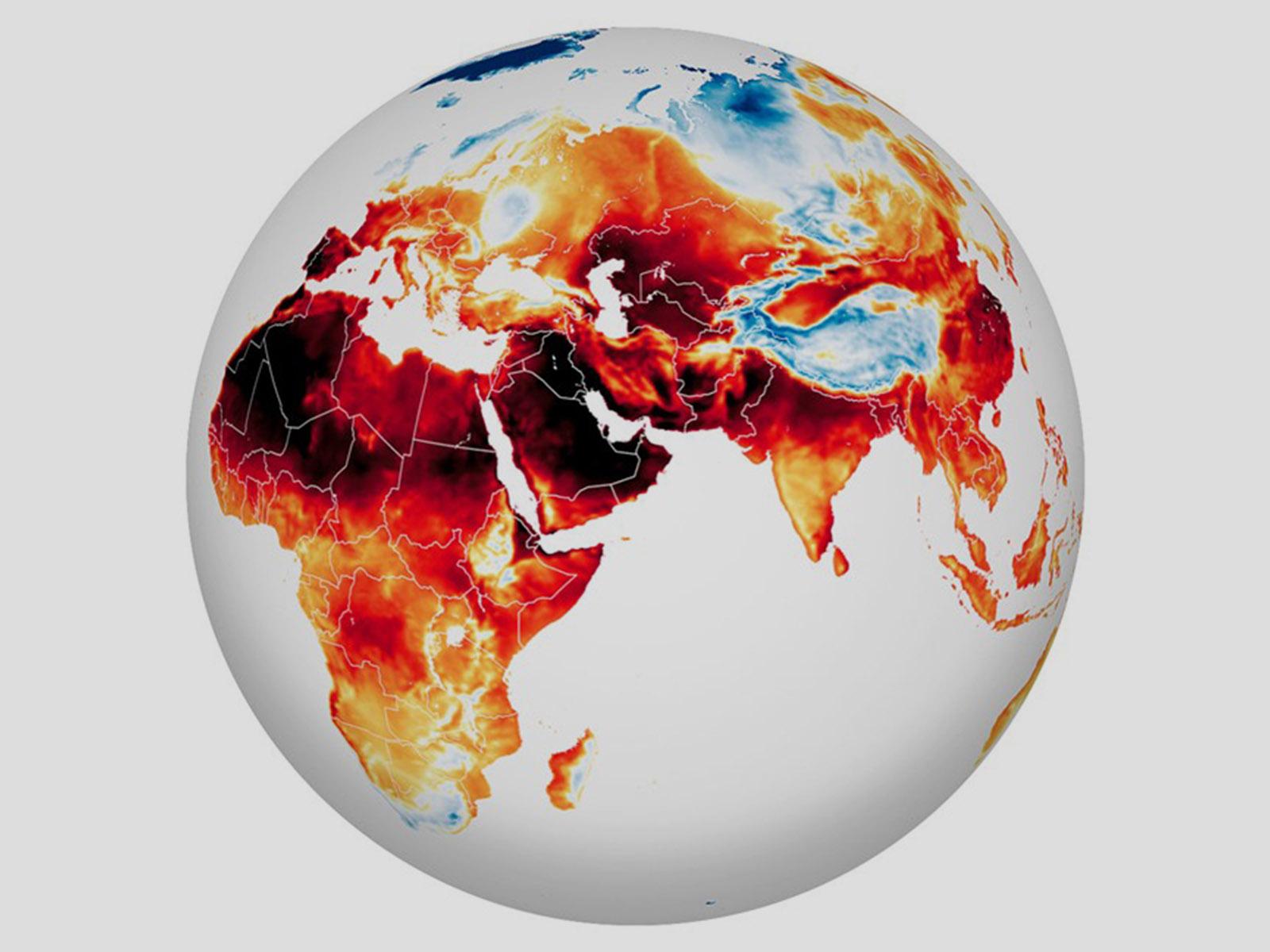Increasing Confidence in Regional Surface Temperature Response through Neutral Modes
Anthropogenically forced evolution of the leading neutral mode explains historical trends in global surface temperature, lending confidence to mode-related regional projections

Understanding patterns in climate response can increase confidence in regional climate change projection.
(Image: NASA)
The Science
Confidence in the regional features of climate change projections is a prized commodity needed for climate adaptation and mitigation. This study strives to decipher the pattern of the anthropogenically forced climate response using a dynamical mode-based framework to establish confidence in regional climate projections. The temperature pattern most susceptible to changes in external factors is known as the leading mode. It captures the evolution of the average global surface temperature over the past century in both observations and multi-model simulations. These results lend confidence to the regional climate change features that are captured by the leading mode.
The Impact
This study offers a fresh perspective on regional climate change response and its associated feedbacks. The results show that certain regional climate response features are organized by well-established dynamical modes in the atmosphere-ocean coupled system, besides the inherent thermodynamic control of the temperature pattern. Differences in the energy entering and leaving the atmosphere, serving as radiative forcing affecting the climate in the midlatitudes, are most efficient at exciting the leading mode and global mean surface warming, with important implications for solar geoengineering.
Summary
Using a large suite of numerical experiments with forcing applied at every representative location of the globe, researchers construct the emergent dynamical operator for surface temperature and extract the leading mode. The leading mode represents the most excitable pattern of the climate system and it accounts for 56% of the variance of the surface temperature response due to the forcing exerted by doubling the carbon dioxide concentration. The pattern of the leading mode is partly organized by the atmospheric annular modes (atmospheric patterns of climate variability that influence surface temperature and precipitation) in both hemispheres and is further modulated by feedbacks from ocean circulations. Though derived from a single model, the leading mode can capture spatio-temporal variabilities of global mean surface temperature in both Coupled Model Intercomparison Project Phase 6 multi-model simulations and observations for the past century. Moreover, the radiative forcings from the midlatitude bands centered around 45°N and 25°S efficiently excite the leading mode. Most human activities take place around these midlatitude bands, suggesting the potency of human influence on climate change.
PNNL Contact
L. Ruby Leung, Pacific Northwest National Laboratory, Ruby.Leung@pnnl.gov
Funding
This research is supported by the Department of Energy Office of Science Biological and Environmental Research as part of the Regional and Global Model Analysis program area. F. L. is supported by the National Key Research and Development Program of China and the National Natural Science Foundation of China.
Published: August 30, 2022
Liu F., J. Lu, R.L. Leung. 2022. “Neutral Mode Dominates the Forced Global and Regional Surface Temperature Response in the Past and Future,” Geophysical Research Letters, 49, e2022GL098788. DOI: 10.1029/2022GL098788